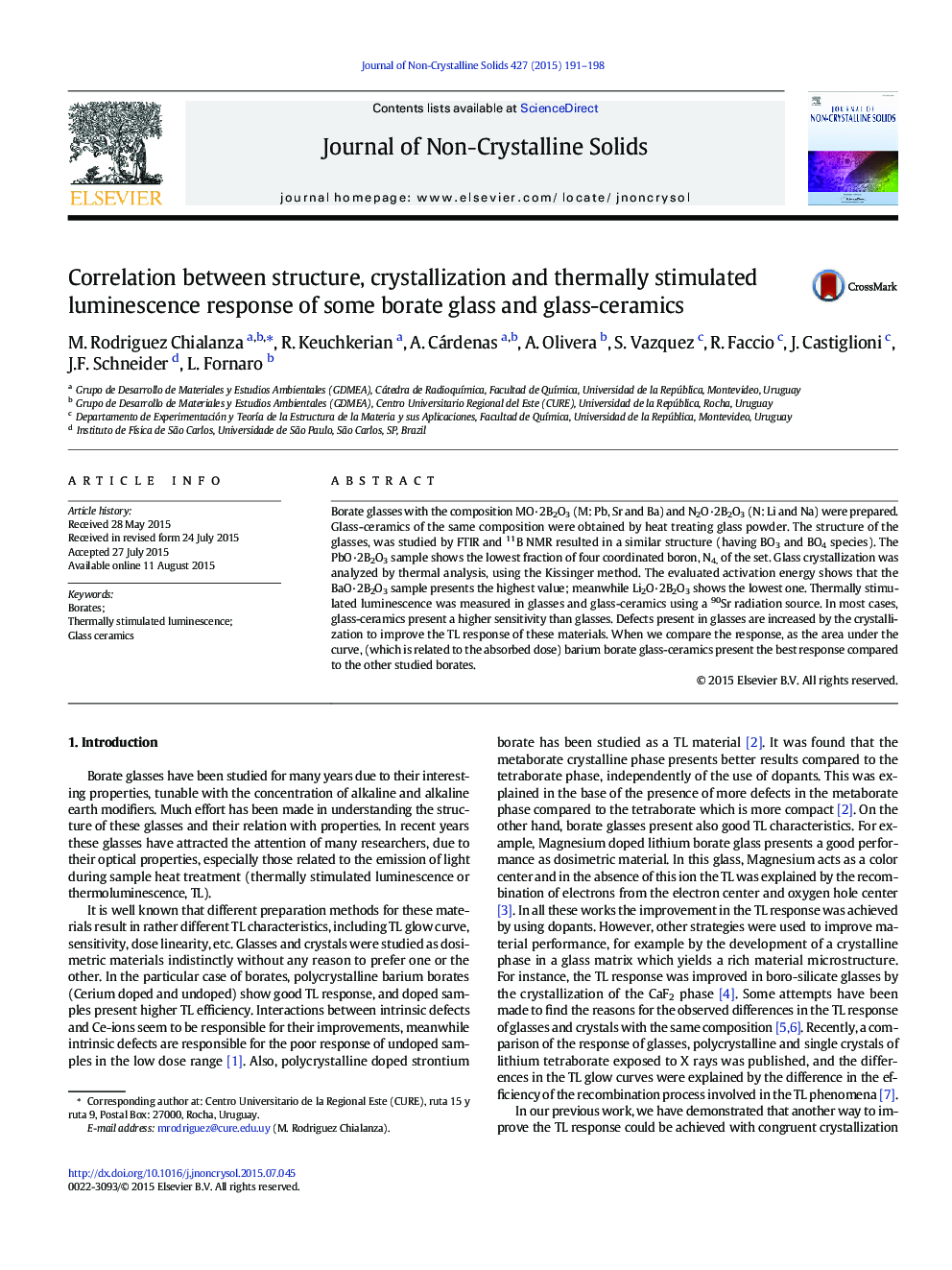| Article ID | Journal | Published Year | Pages | File Type |
|---|---|---|---|---|
| 1480682 | Journal of Non-Crystalline Solids | 2015 | 8 Pages |
Abstract
Borate glasses with the composition MO·2B2O3 (M: Pb, Sr and Ba) and N2O·2B2O3 (N: Li and Na) were prepared. Glass-ceramics of the same composition were obtained by heat treating glass powder. The structure of the glasses, was studied by FTIR and 11B NMR resulted in a similar structure (having BO3 and BO4 species). The PbO·2B2O3 sample shows the lowest fraction of four coordinated boron, N4, of the set. Glass crystallization was analyzed by thermal analysis, using the Kissinger method. The evaluated activation energy shows that the BaO·2B2O3 sample presents the highest value; meanwhile Li2O·2B2O3 shows the lowest one. Thermally stimulated luminescence was measured in glasses and glass-ceramics using a 90Sr radiation source. In most cases, glass-ceramics present a higher sensitivity than glasses. Defects present in glasses are increased by the crystallization to improve the TL response of these materials. When we compare the response, as the area under the curve, (which is related to the absorbed dose) barium borate glass-ceramics present the best response compared to the other studied borates.
Related Topics
Physical Sciences and Engineering
Materials Science
Ceramics and Composites
Authors
M. Rodriguez Chialanza, R. Keuchkerian, A. Cárdenas, A. Olivera, S. Vazquez, R. Faccio, J. Castiglioni, J.F. Schneider, L. Fornaro,
